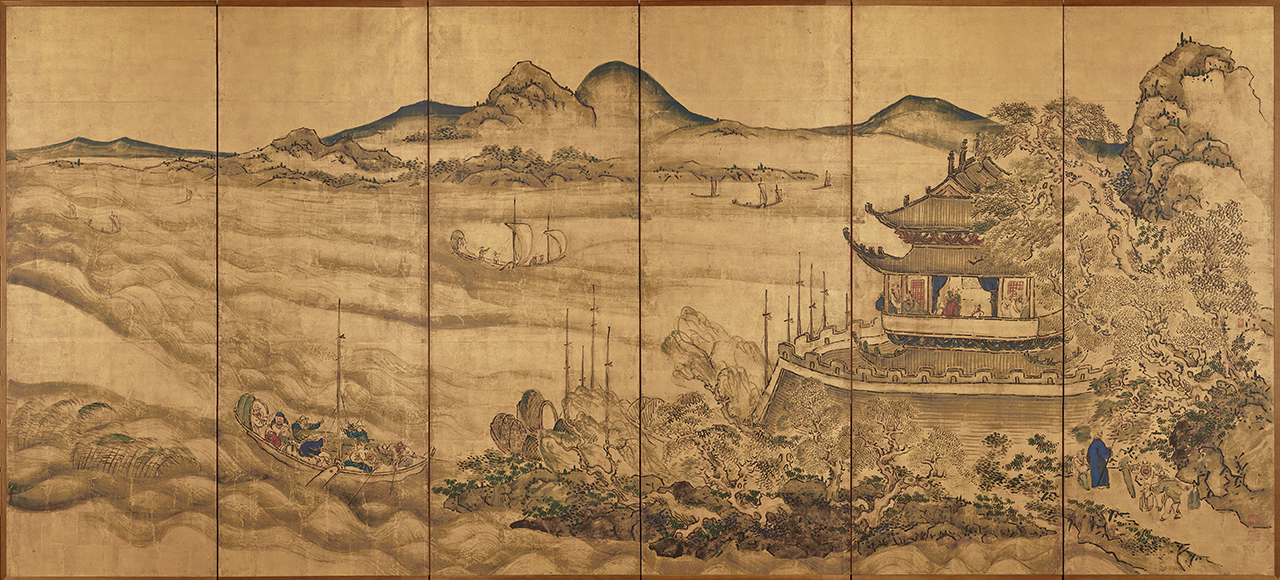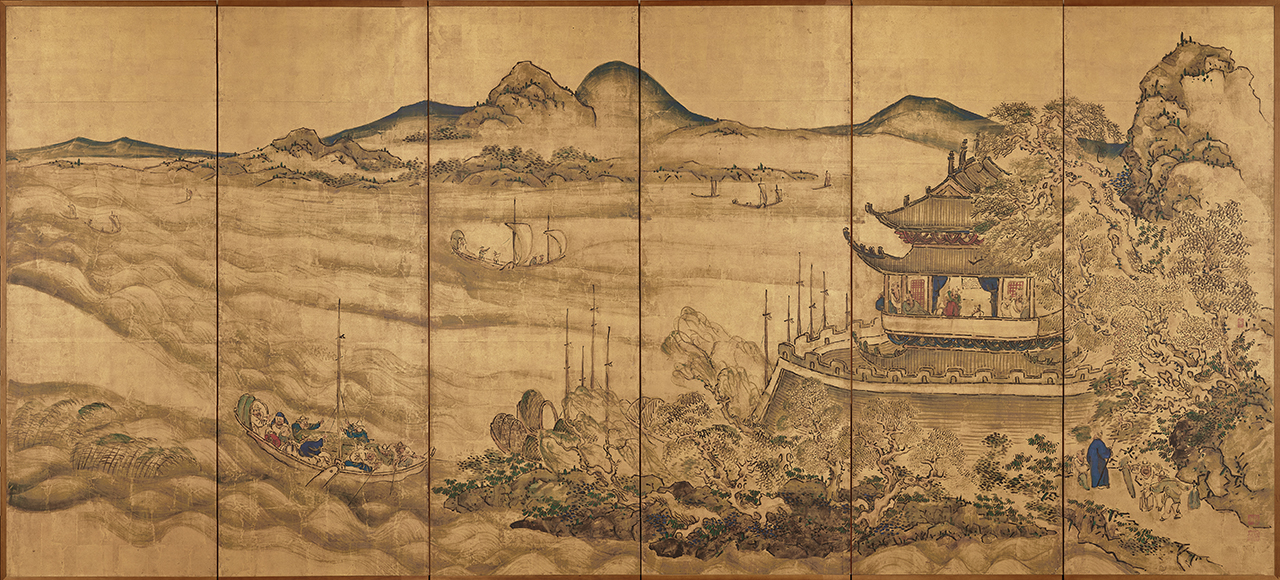Chinese Landscape
DATA
- Artist:
- Ike no Taiga
- Historical era:
- Edo (18th century)
- Material:
- printed, gold on washi paper
- Medium:
- pair of six-fold screens
- Size:
- Each screen H168.7 x W372.6cm
[Original]
- Current owner:
- Tokyo National Museum
- Material:
- ink, color and gold leaf on washi paper
*This work was produced as Agency for Cultural Affairs “FY2021 Project for the Promotion of Regional Development of Cultural Resources with Local Ties (Cultural Resource Content Creation Project Using Advanced Technology)” as part of the Joint-research Project with CPCP.
DESCRIPTION
This pair of folding screens features two famous scenic areas in China. The right screen depicts Yueyang Pavilion, a building on the shore of Dongting Lake, while the left screen shows Zuiweng pavilion, located in the mountains of Anhui province. These are based on two scenes from an album of paintings from Qing dynasty China, which began in 1644 and ended in 1912. Several people have gathered at the top of these buildings to stand amongst the stunning nature and enjoy the tranquility. On a ground of gold foil, the artist had dynamically sketched scenes of nature using sumi ink and translucent pale green hues. This is complimented here and there by vivid ultramarine, vermillion, and verdigris tones. The painter, Ikeno Taiga, was active during the Edo period, which lasted from 1603 till 1868. Many painters at the time were drawn to modern Chinese culture. Taiga was one of these and his works were influenced by Nanshuga, a style of literati painting from Ming and Qing dynasty China, a period between the mid-14th to early 20th centuries. Though Taiga never travelled to China, this work of imagination is infused with his longings for the Middle Kingdom. -Cited from Colbase


